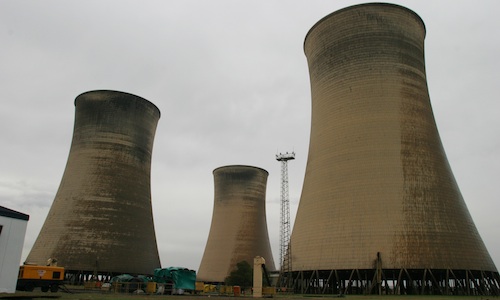
Eskom has spent more than R75,5bn on the capital investment programme since 2005, and delivered 5 031MW of new electricity generating capacity into the system, transport minister Sbu Ndebele said on Tuesday.
Briefing the media in his capacity as chairman of the infrastructure development cluster of ministries, he said the state power utility had also delivered 3 051km of high voltage transmission lines to transport electricity across the country.
Eskom’s approved build programme, which included completion of the Kusile power station in 2017, would spend another R549bn. “The timely completion of Eskom’s build programme up to 2017 is critical in ensuring SA’s security of electricity supply,” Ndebele said.
However, the country would need additional investment in new electricity generating capacity by the private sector over the next few years, up to the delivery of the first unit of the Medupi power station.
Eskom, through its medium-term power purchase programme, had signed agreements with three independent power producers since April 2010. These totalled 277MW, with a number of contracts in the final stages of completion, and would bring the contracted power purchases to around 400MW this year.
Eskom had also embarked on returning to service its previously “mothballed” coal-fired power stations — Camden (near Msukaligwa/Ermelo), Grootvlei (near Dipaleseng/Balfour) and Komati (near Middelburg) — after about 20 years in long-term storage.
The total return to service portfolio would add 3 800MW nominal capacity to the national electricity supply system. The Camden power station was officially launched by President Jacob Zuma in October 2010.
Ndebele said Eskom had taken measures to increase its coal stockpile average stock days to ensure that the targeted 42 days average across its power stations was met. The current figure was about 39 days.
SA’s longer-term electricity supply needs would be directed by the integrated resource plan for electricity now being finalised. The plan would determine the energy mix and associated funding requirements for the next 20 years.
Energy efficiency would play an increasingly important role in future and was crucial in the next two to three years in the context of a constrained electricity supply-demand balance.
Turning to funding, Ndebele said budgets for infrastructure projects remained a problem across the cluster and not least in financing mega projects for electricity. The government had provided support to Eskom with a R350bn guarantee framework. This would minimise the impact on electricity tariffs by enabling greater levels of borrowings from capital markets at the lowest possible interest rates, he said.
The government had also provided Eskom with much-needed equity in the form of a R60bn subordinated loan to shore up its balance sheet, which had also served to improve its access to debt funding.
Work was ongoing to find sources of funding to further strengthen Eskom’s balance sheet without placing undue pressure on the fiscus. Eskom had submitted a US$350m loan application to the World Bank, African Development Bank and other co-financiers to finance a 100MW concentrated solar power plant and a 100MW wind power plant. A decision is expected by June. — Sapa
- Subscribe to our free daily newsletter
- Follow us on Twitter or on Facebook




